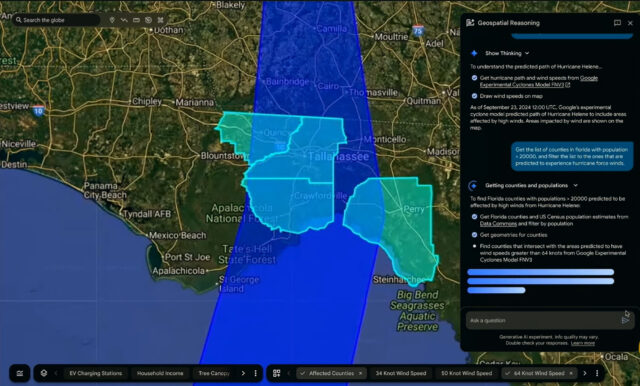Google Earth's new AI tools let users ask questions about the planet

While Google Earth isn’t as massively popular as it once was, it now has some new AI capabilities that could give it fresh purpose. The platform lets users ask questions about the planet and get answers in seconds, using natural language to uncover patterns once buried in data.
The new tools combine satellite imagery, environmental models and Google Gemini’s reasoning to help people better understand what’s happening on the planet we call home.
SEE ALSO: A blast from the past! DivX turns 25 and looks back on its digital video legacy
Analysts can ask Google Earth to identify where rivers have dried up, where vegetation is encroaching on power lines, or where algae blooms could threaten water supplies. The results appear instantly, turning what once required complex analysis into a simple query.
Although not everyone is happy with AI encroaching on seemingly every aspect of our lives, this is one of those areas where it's a genuinely useful addition.
The new features are part of Google’s expanding Earth AI platform, which builds on decades of mapping and environmental modeling.
The same technology supports flood forecasting, wildfire alerts and air quality monitoring for billions of people worldwide. During the 2025 California wildfires, crisis alerts reached 15 million people across Los Angeles, directing them to nearby shelters through Maps.
By linking Earth AI with Gemini’s reasoning, Google has introduced a framework called Geospatial Reasoning which connects data such as weather forecasts, population density and satellite imagery to reveal how environmental events affect specific communities.

Google Earth AI in the clouds
Earth AI is also being integrated into Google Cloud, allowing organizations to combine their own data with Google’s imagery and environmental models. The World Health Organization’s Regional Office for Africa is using it to forecast cholera outbreaks, while companies such as Planet and Airbus are applying it to monitor deforestation and vegetation growth near infrastructure.
The experimental AI features in Google Earth will roll out to U.S. Professional users in the coming weeks, with wider access for Google AI Pro and Ultra subscribers.
For a tool that once inspired users to explore the world from their desktops, Google Earth’s new AI direction marks an unexpected, but brilliant evolution that could make it incredibly useful in ways few imagined.
What do you think about Google Earth’s new AI capabilities? Let us know in the comments.
